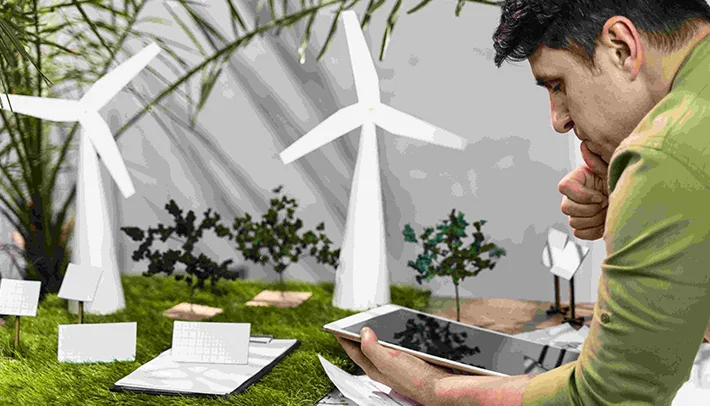Green Technology and Sustainable Engineering Solutions

It started with a sound. Not from a device or a monitor, but from outside. The gradual change of weather cycles. The silent loss of fresh air. The increasing cries of rivers that run with plastic, not water.
And then the questions arose. Can we build without destroying? Can we create without depleting? Can engineering aid not just advance but conserve?
These questions did not remain in textbooks or policy documents. They moved into workshops, design studios and classrooms. They became the spark behind a new way of thinking—a way where technology does not battle nature, but works with it.
This is where green technology and sustainable engineering intervene. Not as a trend, but as an imperative. Not as a future strategy, but as an immediate necessity.
Engineering with a Conscience
For generations, engineering emphasized efficiency and strength—how quickly, how powerful, how much. Now the questions are different. Now we wonder how clean. How durable. How gentle.
Green technology is the reply. It prioritizes designing systems to minimize harm and conserve resources. It does not oppose progress. It redesigns it.
Sustainable engineering takes the same route. It urges engineers to craft solutions that function not only for today but for generations to come. It invites them to think in loops rather than straight lines— to consider how to construct, recover, reduce and reuse.
It is not merely about materials. It is about mindsets.
Energy That Renews Itself
Clean energy is one of the strongest pillars of green technology. This includes energy from sunlight, wind, water and even heat from inside the Earth.
Unlike burning fossil fuels that deplete and pollute the environment, these sources replenish themselves. They are limitless as long as they are used wisely— and engineers are becoming more skilled in harnessing them every day.
Solar panels are getting lighter and more efficient. Wind turbines are engineered to gather more energy using less land. Water flow is being studied to provide electricity where dams are not feasible.
These are not distant ideas. They are operational systems. They illuminate homes, power factories and energize cities—while leaving the air and skies pure.
Buildings That Breathe
Conventional buildings consume a lot of energy for heating, cooling and lighting. But sustainable design turns this equation on its head.
Engineers now build houses that give back to nature. They utilize the sun to illuminate rooms. They employ plants and natural materials to cool spaces. They harvest rainwater and recycle wastewater.
With intelligent ventilation and green roofs, these buildings do more than shelter people— they coexist with them. They breathe with them.
Even small adjustments such as sensor-driven lights and efficient fans can reduce power consumption. When scaled across cities, those little decisions make a big difference.
Machines That Care
Every machine we use leaves its mark on the world. From transportation to manufacturing, the challenge is to minimize impact without sacrificing function.
This is where green engineering steps in. Electric cars are replacing gasoline-powered ones. Water treatment systems now use nanotechnology to remove contaminants without chemicals. Factories are embracing circular economies where waste from one operation becomes input for another.
Even electronic products are being redesigned for longer lifespans and easier recyclability. These are not just technical decisions—they are moral ones.
They express a simple truth: machines should benefit not just humans, but the planet they inhabit.
Trash That Won’t End Up as Trash
Perhaps the biggest challenge of the modern era is waste. From plastics to metals to wasted energy— every system leaves behind leftovers.
Sustainable engineering does not see waste as the end, but the beginning. Bioengineering produces materials that break down naturally. Industrial design adopts modular systems to be disassembled and reused. Waste streams are analyzed like traffic, searching for ways to redirect, reduce and redesign.
In many cities, waste is already being converted into fuel, bricks and fertilizers. What once filled landfills now constructs playgrounds and powers buses.
This is the key to green technology: nothing goes to waste when everything serves a purpose.
Collaboration That Brings Change
Changing to sustainable solutions cannot be the work of a single field of engineering. It requires everyone's hands. Civil, mechanical, computer, electrical, chemical and more.
It also requires partnerships: between scientists and engineers, colleges and cities, local knowledge and global technology.
The strongest solutions emerge when ideas are shared—when innovation meets empathy, and when design meets care.
The Engineer as a Guardian
The role of the engineer is evolving. Today’s engineer is not merely a constructor, but a guardian—of resources, of communities, of the future.
Green technology is not just machines and materials—it is values. It is the conscious choice to create a world where growth does not come at the expense of the planet.
It begins with better questions. Can we scrub while we build? Can we mend while we construct?
The answers are already being written—in sunlight-powered projects, wind-cooled buildings, and cities designed to breathe.
And in the quiet decision of an engineer who chooses sustainability not because it is easy, but because it is right.